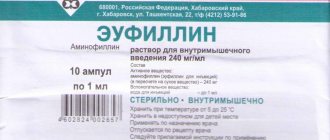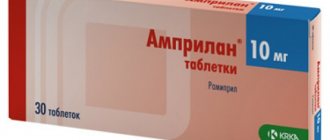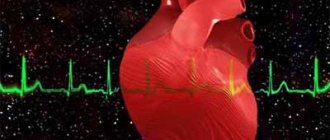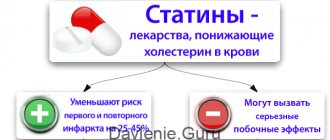Release form, composition
The active substance of the drug is simvastatin
"Simvastatin" is available in tablet form and is a prescription drug. The dosage in one tablet can be 10, 20 or 40 mg. The package contains from 10 to 30 pieces. The active substance of the drug is simvastatin. It makes up the majority of the medication, the rest comes from auxiliary components.
The drug in question is produced by different manufacturers. The dosage and cost of the product depend on this. "Simvastatin Zentiva" is produced in the Czech Republic, "Nizhpharm" - in Russia, "Simvastatin Alkaloid-Rus" - in Macedonia.
Composition and dosage form
Simvastatin (INN by radar - simvastatin) is an active substance that is included in a number of branded drugs from different manufacturers and brands under different names (Zentiva, Vertex, North Star and others, depending on the country). The compound belongs to the third generation of statins and is a proven lipid-lowering agent.
On pharmacy shelves you can find a drug with a name completely identical to the active substance - Simvastatin. The drug is released in tablet form, has biconvex rounded edges, and is covered with a transparent or whitish coating. Depending on the concentration of the active substance, Simvastatin tablets are available in several versions - 10 and 20 mg.
Cholesterol in the human bloodstream is present only in protein-bound form. Such compounds are called lipoproteins. There are several types of these molecules in the body - high, low and very low densities (HDL, LDL and VLDL, respectively). a clear predominance in lipid metabolism towards LDL, the so-called “bad” cholesterol.
The therapeutic effect of Simvastatin is achieved primarily by reducing this fraction of lipoproteins (LDL). By inhibiting the enzymatic chain of HMG-Coenzyme A reductase, the drug under study reduces the concentration of fats inside cells and activates receptors for low and very low density lipoproteins (LDL and VLDL). Thus, the pathogenesis of hypercholesterolemia is affected by two mechanisms at once - cholesterol is less readily accepted by cells and is eliminated much faster from the bloodstream and the body as a whole.
Against the background of a decrease in the harmful fraction of fats, the lipid balance is restored and the concentration of the antagonist, high-density cholesterol, moderately increases. According to various sources, the increase in HDL after a course of therapy will be from 5 to 14%. Simvastatin not only reduces bad cholesterol, but also has a vascular strengthening effect . This medicine inhibits the processes of dysfunction of the vascular wall, increases its elasticity and tone due to its antioxidant effect.
One of the theories for the development of atherosclerosis is inflammatory. The focus of inflammation is an obligatory part of any atherosclerotic lesion in the endothelium. Simvastatin has an antiproliferative effect, thereby protecting the endothelium from sclerosis, scarring and stenosis. A number of scientific sources indicate that the protective effect on the endothelium is formed within a month from the start of taking the drug.
The drug is prescribed only according to strict indications; dose selection is individual. The starting dose is usually 10 mg and, according to patients and doctors, it is tolerated quite well. The maximum daily dosage is 80 mg. It is prescribed for severe hyperlipidemic conditions. For patients with mild liver or kidney disease, the maximum dose is lower and is 40 mg.
pharmachologic effect
After penetration into the blood, the active substance of the drug is converted into protein, which prevents the formation of excess bad cholesterol. Taking the medicine reduces the level of cholesterol and triglycerides in the liver and blood.
Simvastatin Zentiva also provokes an increase in the concentration of good fats, improves blood properties, strengthens vascular walls, and has an antioxidant effect. The effect of using the capsules is noticed after 14 days. The maximum positive effect is observed after 1-1.5 months.
Operating principle
Simvastatin causes a hydrolysis reaction, which leads to a decrease in cholesterol levels. This happens because
because the drug inhibits the action of the enzyme that supports cholesterol synthesis - HMG-CoA reductase.
The substance localizes abnormal cholesterol and has a beneficial effect on the level of high-density lipoproteins, which are responsible for transporting good cholesterol.
The drug is absorbed well, the highest concentration is observed after a couple of hours, and after 12 hours its amount decreases to 10% of the original.
Indications
Simvastatin should only be taken with the approval of a doctor.
Prescribe "Simvastatin Alkoloid" for high cholesterol in the blood. Indications for taking the drug are:
- Primary hypercholesterolemia. The drug is prescribed if following a diet and taking other medications have not brought the desired result in the fight against pathology.
- Combined hypercholesterolemia and hypertriglyceridemia, which are also not eliminated by dietary nutrition and physical therapy.
- Cardiac ischemia. The drug is used as a prophylaxis for myocardial infarction, stroke, atherosclerosis and other pathological processes associated with the cardiovascular system.
Under no circumstances should you prescribe a remedy for yourself. It is allowed to be taken only with the approval of a doctor and strictly according to the instructions for use of Simvastatin.
Use of the drug simvastatin
Simvastatin is a medicine from the group of statins, which is prescribed to improve cholesterol levels in the blood, slow down the development of atherosclerosis, and reduce the risk of first and recurrent heart attacks and ischemic strokes. This drug has been used for a long time and is well studied. It has become the standard against which newer drugs are compared. Like other statins, simvastatin is prescribed in addition to diet and exercise. Do not try to replace the transition to a healthy lifestyle by taking pills.
Currently, newer drugs - atorvastatin and rosuvastatin - are gradually replacing simvastatin. The fact is that new statins lower “bad” cholesterol and increase “good” cholesterol in the blood. They can even slightly reduce the thickness of atherosclerotic plaques. They can also be taken together with certain medications with which simvastatin is not recommended. This does not mean that atorvastatin and rosuvastatin are safe drugs. They also have a significant risk of side effects.
Convincing evidence has been obtained of the effectiveness of simvastatin for patients at high risk of cardiovascular disease. Treatment with this drug for people who have been diagnosed with coronary heart disease, diabetes mellitus, or metabolic syndrome is described in detail below. Statins should be taken by patients suffering from unstable angina, who have had a heart attack, stenting or coronary artery bypass surgery. At the same time, if a person has high cholesterol but no other risk factors, then prescribing statins may do more harm than good.
Reducing “bad” cholesterol
Simvastatin is usually prescribed to reduce the level of “bad” LDL cholesterol in a patient’s blood. By improving cholesterol levels, this drug is believed to reduce the risk of first and recurrent heart attacks, ischemic stroke, and death from all causes. In addition to their effect on cholesterol, statins have other effects called pleiotropic. For example, they increase the production of nitric oxide, a substance that relaxes blood vessels.
A major trial of the effectiveness of the drug was the Scandinavian Simvastatin Survival Study (4S) - a Scandinavian study of the effectiveness of simvastatin in patients with angina or those who had myocardial infarction. It involved 4444 patients who were followed for more than 5 years. The results of the study were published in 1994. The drug had the following effect:
- reduced total cholesterol by 25%;
- reduced “bad” LDL cholesterol by 35%;
- increased “good” HDL cholesterol by 8%;
At a dosage of 80 mg per day, the drug reduces “bad” cholesterol by another 6%, compared to a dosage of 40 mg per day. However, in August 2011, the US Department of Health (FDA) recommended that doctors limit the use of simvastatin to 80 mg per day due to the high risk of side effects. This reduced the popularity of the drug abroad, but had almost no effect on Russian-speaking countries. Currently, newer statins - atorvastatin and rosuvastatin - are gradually replacing simvastatin because they lower cholesterol more effectively. However, the process of replacing old drugs with new ones is slow.
An alternative view of statins is that they are beneficial because they have an anti-inflammatory effect. Treatment with these tablets reduces levels of C-reactive protein, tumor necrosis factor alpha, and other inflammatory markers. Many representatives of alternative medicine and even certified doctors believe that atherosclerosis and cardiovascular diseases are caused by chronic, low-grade inflammation in the blood vessels. In this case, simvastatin and other statins are useful because they reduce inflammation. And lowering cholesterol in the blood is just their side effect, which has almost no effect on cardiovascular and overall mortality.
Atherosclerosis
Atherosclerosis is the leading cause of heart attack, stroke, leg pain and many other age-related health problems. The main treatment for atherosclerosis is a healthy diet and physical activity. If switching to a healthy lifestyle is not enough, then statins are prescribed, in particular simvastatin. This drug inhibits the development of atherosclerosis because it lowers “bad” cholesterol in the blood, as well as through other mechanisms called pleiotropic effects. It has an anti-inflammatory effect, reduces platelet aggregation and activates fibrinolysis - the process of dissolving blood clots.
The effectiveness of simvastatin in atherosclerosis has been proven by the results of many studies. For example, in 1994, the results of the MAAS (Multicenter Anti-Atheroma Study) study were published in the Lancet journal. It involved 381 patients who had severe atherosclerosis of at least two segments of the coronary arteries. In patients taking the original drug Zocor 20 mg per day, total and “bad” cholesterol decreased, and the average and minimum diameter of the lumen of blood vessels increased. In patients who were included in the placebo group, blood cholesterol levels changed slightly, and the diameter of the lumen of the coronary vessels decreased. Also, patients in the placebo group were more likely to develop new areas of atherosclerosis.
Simvastatin, like other statins, inhibits the development of atherosclerosis. At the same time, this drug stimulates the deposition of hard calcium in the arteries, worsening the course of the disease. Read more in the article “Statins for atherosclerosis: pros and cons“. It is possible that statins reduce the risk of heart attack and stroke, but increase the risk of heart failure.
Cardiac ischemia
For coronary artery disease, simvastatin or other statins are prescribed to reduce the incidence of heart attack and stroke and the risk of stenting or coronary artery bypass surgery. Patients diagnosed with coronary heart disease are patients at high cardiovascular risk. They need to take statins because no other medications or dietary supplements can help as well. These medications should only be stopped if the side effects become intolerable.
The UK Heart Protection Study involved 20,536 patients, most of whom had coronary heart disease. Doctors monitored them for about 5 years. Among those who took simvastatin 40 mg per day, overall and cardiovascular mortality, the incidence of heart attack and stroke decreased. These patients were also less likely to require stenting or coronary artery bypass surgery. Doctors prescribed an HMG-CoA reductase inhibitor even to many patients who had normal cholesterol. In them, the drug also significantly reduced the risk of cardiovascular problems.
As a rule, for coronary heart disease, simvastatin is prescribed at a dosage of 20 mg per day. Later it can be increased to 40 mg per day if the “bad” cholesterol and C-reactive protein in the blood are not reduced enough. Please note that the dosage of simvastatin 10 mg per day is too low. Experts doubt that it has a sufficient effect. In August 2011, the US Department of Health (FDA) advised that it is advisable to limit the use of this drug to a dosage of 80 mg per day due to the high risk of side effects. After this, doctors began to switch their patients to atorvastatin or rosuvastatin.
Dosage regimen
Admission is carried out strictly according to the dosage recommended by the doctor. The dose should be increased gradually. The initial con is a maximum of 20 mg. If necessary, the dosage is increased at monthly intervals. The maximum prescribed is 40 mg per day.
Take the drug once a day in the evening. If the patient simultaneously takes immunosuppressants, it is recommended to start treatment with 5 mg per day. Exceeding the dose is not allowed. No more than 10 mg can be taken by people suffering from severe renal failure.
You must take Simvastatin Zentiva strictly according to the instructions provided by your doctor. In case of overdose, it is necessary to rinse the stomach. To do this, the patient is given a large amount of water to drink and is induced to vomit. It is also recommended to take a sorbent, for example, activated carbon.
High cholesterol in children
Simvastatin, like other statins, is prescribed to adolescents aged 10-17 years who suffer from the rare hereditary disease heterozygous familial hypercholesterolemia. Girls can start taking HMG-CoA reductase inhibitors no earlier than a year after their first menstruation occurs. The effectiveness of simvastatin in adolescents was studied in a double-blind, placebo-controlled study involving 173 patients. Of these, 106 people took the real drug and 67 took a placebo. The observation period is 24 weeks.
How does an HMG-CoA reductase inhibitor lower cholesterol in adolescents?
| Placebo | Simvastatin | |
| Total cholesterol,% | +1,6 | -26,5 |
| LDL cholesterol, % | +1,1 | -36,8 |
| HDL cholesterol, % | +3,6 | +8,3 |
| Triglycerides,% | -3,2 | -7,9 |
Treatment began with a dosage of 10 mg per day. After 8 weeks it was increased to 20 mg per day, and after another 8 weeks - to 40 mg per day. Simvastatin has not been studied in studies in children younger than 10 years. It is not recommended for adolescents in dosages above 40 mg per day. It is also not known how much this drug reduces the risk of cardiovascular disease and mortality in the long term if started in adolescence.
Side effect
When treated with Simvastatin, negative reactions of the body may occur. Side effects include the following:
- Problems with the digestive tract: nausea, diarrhea, increased gas formation, exacerbation of pancreatitis.
- Impaired functioning of the nervous system: headache, headache, dizziness, convulsions, decreased skin sensitivity.
- An allergic reaction in the form of a skin rash accompanied by itching.
- Symptoms of anemia: weakness, drowsiness.
In rare cases, angioedema may develop. If such severe consequences of taking the medication as myopathy with rhabdomyolysis and acute renal failure develop, you must urgently stop taking Simvastatin Zentiva and administer a diuretic and sodium bicarbonate intravenously. In some cases, there is a need for hemodialysis.
Side effects
From the gastrointestinal tract there may be abdominal pain, functional dyspeptic syndromes, nausea, vomiting, and stool disorders. The use of the drug can actively affect the liver - according to the instructions, a temporary increase in liver enzymes (blood transaminases) is possible.
The central and peripheral nervous system may respond to the use of Simvastatin by developing astheno-vegetative syndrome with episodes of cephalgia, fatigue, weakness, mood swings, insomnia, and dizziness. More serious side effects of Simvastatin include muscle twitching (fasciculations), disturbances in peripheral sensitivity, and sensory changes.
If there is a high individual sensitivity to the active or excipients of this medicine, allergic reactions may develop. There are many types of their manifestations, but according to statistics, urticaria, eosinophilia, allergic arthritis, angioedema and polymyalgia of rheumatoid origin can most often develop.
Skin manifestations of adverse reactions can be in the form of a red pinpoint erythematous rash, itching, and dermatoses. Lipid-lowering drugs are toxic to muscle tissue, therefore, with a number of individual characteristics or high dosages, the appearance of myopathies, muscle pain, inflammatory processes in the muscles, their weakness and fatigue is possible. In very rare cases, rhabdomyolysis develops.
Contraindications for use
Therapy can lead to myopathy
"Simvastatin" has a number of contraindications for use. Absolute restrictions include the following:
- Individual intolerance to the components of the drug.
- Liver pathologies in the acute stage.
- Liver failure.
- Hypersensitivity to lactose.
- Diseases of the skeletal muscles.
- Children under 18 years of age.
People who:
- They abuse alcoholic beverages.
- They suffer from acute infectious diseases.
- Have low blood pressure.
- They have problems with metabolic processes in the body.
- They suffer from disturbances in the functioning of the endocrine system.
- Taking immunosuppressants.
- They are epileptic.
- Recently underwent surgery.
- They are over 60 years old.
- We were injured.
To prevent adverse consequences after taking the medicine, the doctor diagnoses the patient’s health in order to identify possible contraindications.
Use during pregnancy and breastfeeding
Doctors prohibit women carrying a baby from taking Simvastatin Zentiva. This is due to the negative impact of the active substance on the development and health of the child. Therefore, during treatment with this drug it is necessary to protect yourself as carefully as possible. If pregnancy occurs, you will have to stop taking this drug.
In case of breastfeeding, doctors also do not recommend taking Simvastatin. Studies have not shown that the active substance penetrates into milk, but such a possibility still exists.
Use for liver dysfunction
It is not allowed to take the medicine if a person has acute pathological processes in the liver and a persistent increase in transaminase activity.
Use for renal impairment
In case of failure of the kidneys, in particular renal failure, the drug should be taken with extreme caution.
Use in children
Doctors do not recommend treating minor children with Simvastatin, since its effectiveness and harmlessness in childhood have not been proven.
Contraindications
Absolute:
- myopathy;
- active liver disease or persistent increase in the activity of liver transaminases of unknown etiology;
- lactase deficiency, lactose intolerance, glucose-galactose malabsorption syndrome;
- pregnancy and pregnancy planning period;
- lactation;
- age under 18 years;
- history of hypersensitivity to the components of Simvastatin or other statin drugs.
Relative:
- history of liver disease;
- the period after liver transplantation in the case of immunosuppressant therapy;
- alcoholism;
- epilepsy, uncontrollable seizures;
- increased or decreased skeletal muscle tone of unknown etiology;
- severe renal failure (creatinine clearance less than 30 ml/min.);
- conditions that can lead to severe renal failure, such as water and electrolyte imbalance, arterial hypotension, severe endocrine and metabolic disorders, acute infectious diseases, injuries and surgical interventions, including dental ones;
- simultaneous use of diltiazem, verapamil, amiodarone, nicotinic acid (at a dose of more than 1 g per day), cyclosporine, fibrates.
special instructions
When taking Simvastatin, there is a high risk of developing myopathy, the essence of which is muscle pain and weakness. The likelihood of the disease increases in people over 65 years of age, female gender, hypothyroidism and impaired kidney function. How high the risk of developing myopathy is depends on the dosage of the drug.
Doctors are required to warn their patients before starting treatment or increasing the dose of a drug that therapy can lead to myopathy. Doctors should also inform about the need to urgently visit specialists if muscle pain occurs without obvious reasons, as well as muscle weakness. If myopathy is suspected, the medication will be immediately discontinued.
It is also recommended to stop using the medication several days before and after surgery until the body is completely rehabilitated.
Reviews of Simvastatin
Reviews about Simvastatin are mostly positive. Patients and some doctors point to the effectiveness of the drug in lowering cholesterol levels and preventing atherosclerosis, its affordable price, ease of use, and good tolerability.
Another part of doctors prefers new generation drugs, the side effects of which are less pronounced.
While taking the drug for chronic pancreatitis, there is an increase in the frequency of exacerbations of the disease.
Drug interactions
During treatment, it is forbidden to drink grapefruit juice.
Before using different medications, you should find out in advance whether Simvastatin Alkaloid is combined with other medications. Instructions for use note the following interactions:
- With cytostatic, antifungal agents, fibrates, antibiotics: the risk of developing myopathy increases.
- With Cyclosporin or Danazol: high doses of Simvastatin and taking these medications leads to myopathy and rhabdomyolysis.
- With other lipid-lowering drugs: the likelihood of myopathy increases.
- With Amiodarone and Verapamil: the risk of developing myopathy increases if you take large doses of Simvastatin and these medications.
- With anticoagulants: the risk of bleeding increases.
- With "Kolestyramine": bioavailability decreases, so taking "Simvastatin" is allowed 4 hours after taking this drug.
Do not drink grapefruit juice during treatment. Otherwise, the level of inhibitor activity increases. During therapy, the use of alcoholic beverages should be completely avoided, as it creates excessive stress on the liver.
Drug analogues and prices
In medicine, there are many analogues of Simvastatin, which are also based on this active substance. Therefore, they have a similar effect. The most popular drug substitutes are the following:
- "Ineji" (2033 rubles).
- "Simvastol" (294 rubles).
- “Simgal” (773 rubles).
- “Simvor” (213 rubles).
Pharmaceuticals do not stand still, so second and third generation products are appearing. These include drugs whose active substances are atorvastatin and rosuvastatin. The difference between atorvastatin and simvastatin is that the first component is synthetic, and the second is natural.
All of them are highly effective, as confirmed by numerous studies. But synthetic medicines are less studied because they have not been on the market for so long.











